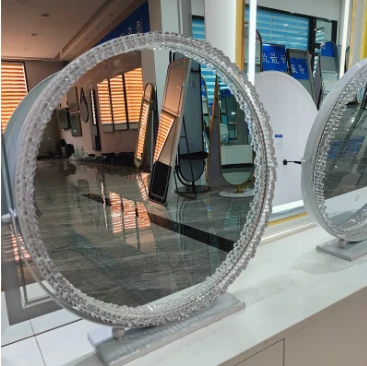Dec . 11, 2024 11:21 Back to list
acid etched
Understanding Acid Etching Techniques and Applications
Acid etching is a versatile technique widely used in various fields, including art, manufacturing, and electronics. This process involves the use of acid to create designs, patterns, or textures on surfaces, particularly metals and glass. The appeal of acid etching lies in its ability to produce intricate details that are difficult to achieve using other methods. In this article, we will delve into the principles behind acid etching, techniques involved, and its diverse applications.
The Principles of Acid Etching
At its core, acid etching is a form of subtractive manufacturing. This means that material is removed from a surface to create a desired effect. The method starts by applying a protective resist to the area of the material that is not intended to be etched. Commonly, this resist is made from wax or a special etching paint. The resist acts as a barrier, preventing the acid from affecting the underlying material.
Once the resist is applied, the next step involves exposing the surface to a suitable etching solution—typically a mixture of acids. The choice of acid depends on the type of material being etched. For example, ferric chloride is often used for etching copper, while hydrochloric acid may be employed for zinc. The acid reacts with the exposed areas of the material, gradually eating away at the surface to create the desired pattern or texture.
Techniques in Acid Etching
There are several techniques associated with acid etching that can be adapted depending on the desired outcome. One popular method is the use of photochemical etching, which combines photography with traditional etching techniques. In this process, a photo-sensitive resist is applied to the surface, and a photographic image is developed on top. This technique allows for extremely fine details and is often used in high-precision applications like circuit board manufacturing.
Another technique involves the use of stencils. A stencil can be created from a variety of materials, and when placed over the surface to be etched, it allows the acid to only reach specific areas. This method is particularly useful in creating uniform patterns or logos.
acid etched

Contrastingly, manual methods, such as sandblasting combined with acid etching, can achieve distinct textures. By initially sandblasting the surface to create a rough texture and then applying acid, artists and manufacturers can create deeper, more intricate designs.
Applications of Acid Etching
The applications of acid etching are diverse, spanning across many industries. In the realm of art, acid etching serves as a technique for creating prints. Artists use the method to transfer intricate designs onto metal plates, which can then be inked and printed on paper. The result is a high-quality image with rich textures and depth.
In manufacturing, acid etching is essential for producing printed circuit boards (PCBs). The ability to precisely remove conductive materials allows for the creation of intricate circuitry necessary for modern electronics. This process ensures that the components fit together seamlessly and function as intended.
Furthermore, acid etching is gaining popularity in the decorative glass industry. By creating frosted designs on glass surfaces, manufacturers can produce stunning visual effects. These designs can be found in residential, commercial, and architectural spaces, enhancing the aesthetic value of glass installations.
Additionally, acid etching is employed in the production of jewelry. Designers often use this technique to add detailed patterns to metal jewelry pieces, enriching their visual appeal. The ability to customize designs through acid etching has opened new avenues in the jewelry market.
Conclusion
Acid etching is a remarkable technique that combines artistry with precision engineering. Its adaptability allows it to be used in various domains, from fine art to high-tech manufacturing. As technology advances, new methods and materials continue to emerge, expanding the possibilities of what can be achieved through acid etching. Whether it’s creating a thoughtfully designed jewelry piece or a complex electronic circuit, acid etching remains a vital tool for artists and engineers alike. Its enduring appeal lies in the captivating details and unique textures it can create, making it an essential technique in both historical and contemporary practices.
-
Safety and Style with Premium Laminated Glass Solutions
NewsJun.24,2025
-
Reinvents Security with Premium Wired Glass
NewsJun.24,2025
-
Premium Float Glass Line for Modern Architecture
NewsJun.24,2025
-
Low Emissivity Glass for Energy-Efficient Architecture
NewsJun.24,2025
-
High-Performance Insulated Glass Solutions for Modern Architecture
NewsJun.24,2025
-
Elevates Interior Style with Premium Silver Mirror
NewsJun.24,2025
Related PRODUCTS














